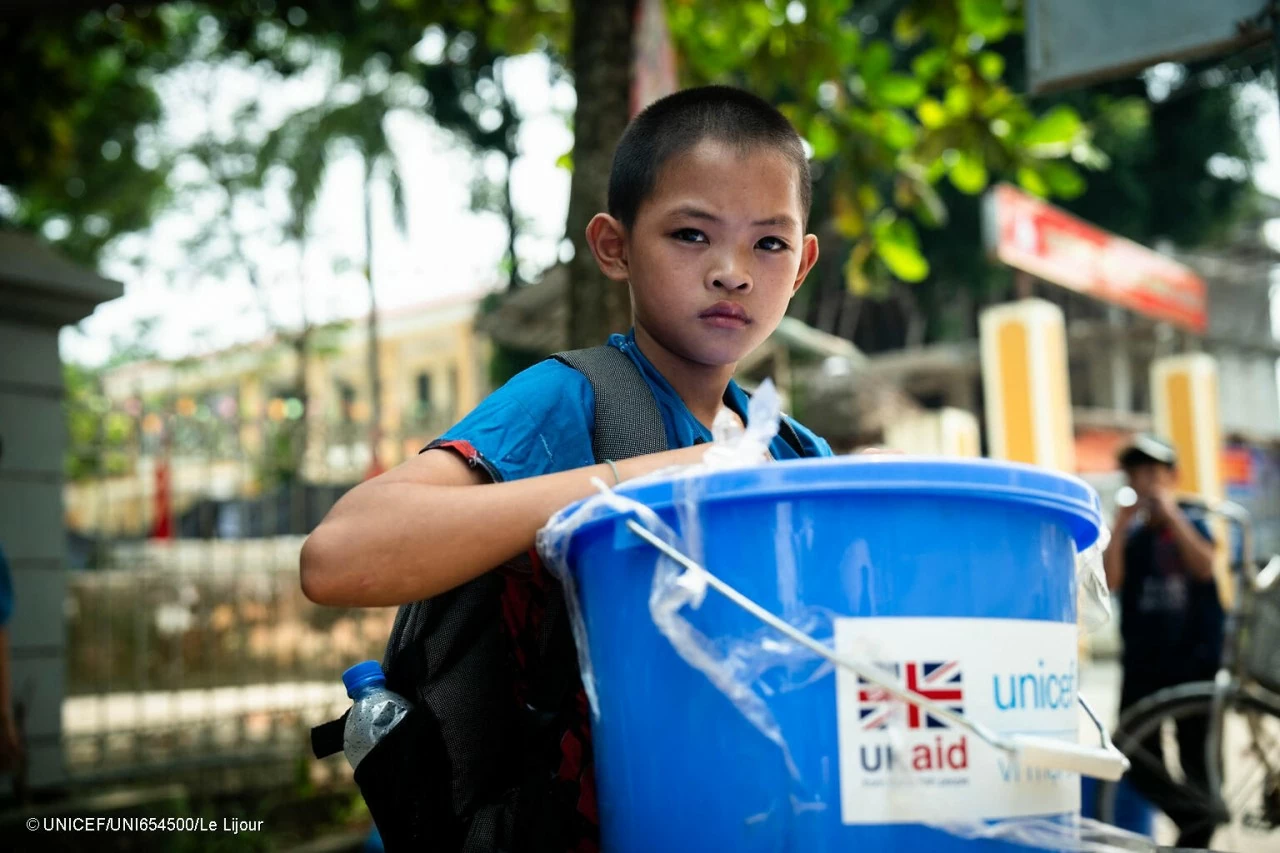
UNICEF’s emergency response to Typhoon Yagi in Vietnam
Latest
One month after super Typhoon Yagi swept through the coastline and mountainous areas of northern Vietnam, children continue to endure the aftermath of the strongest storm of their lives.
 |
| A child holds a UNICEF-supplied Child Protection Kit, containing essential items for hygine and safety needs (toothbrush, toothpaste, soap, toilet paper, sanitary napkins, raincoat, mosquito net, boots) as well as leaflets for parents and children for protection and psychosocial care. (Photo: UNICEF) |
On September 7, Typhoon Yagi ravaged 26 provinces in Vietnam, with strong winds and torrential rains hitting 11 provinces the hardest. As it passed through, the storm swept away lives, homes, crops and livelihoods, causing severe flooding and landslides that turned out fatal for over 300 people.
More than 2.6 million children live in the most affected areas, and many of them are in dire need of water and sanitation, nutrition, healthcare, education and protection support.
Disasters disrupt essential healthcare services, learning and access to safe water, sanitation and hygiene. They also increase pre-existing vulnerabilities, such as those associated with malnutrition, child protection and poverty. And the fear caused by natural disasters can haunt children for a lifetime if they do not receive timely intervention and support.
In collaboration with the Government of Vietnam and humanitarian partners, UNICEF swiftly delivered much-needed water, sanitation and hygiene (WASH) support; particularly important as deprivations in WASH remain leading causes of child death and illness.
UNICEF is also distributing nutrition supplies to support the health sector in treating children suffering from wasting, stunting and nutrition deficiencies, all of which are at severe risk of worsening due to the typhoon.
UNICEF’s support includes the provision of emergency medicine kits and other essential supplies, supporting the restoration of essential healthcare services, including immunization and other early childhood development and maternal child health.
Besides, children and families impacted and displaced by the sheer destruction caused by the typhoon have received emergency kits with hygiene and learning materials. UNICEF has also set up violence prevention and response activities, including for gender-based violence.
UNICEF and government partners also provide mental health and psychosocial support services to help those affected in dealing with the stress, uncertainty, fear and even trauma caused by the typhoon.
Finally, UNICEF will roll out a humanitarian cash assistance programme to support families who are now enduring significant financial hardship in the aftermath of Typhoon Yagi.
















